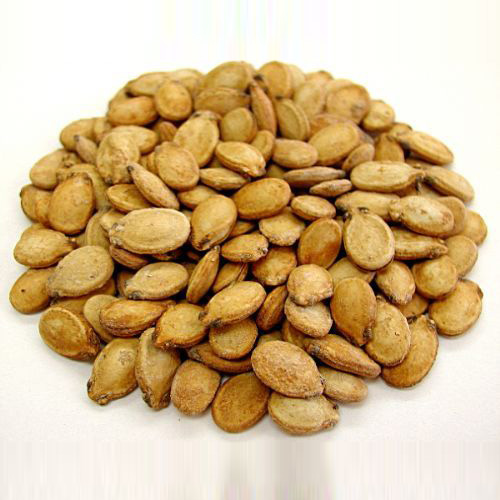Watermelon Seeds
If you thought watermelon seeds were only good for spitting out, think again! Our delicious watermelon seeds have been roasted and lightly salted for an incredible taste. A handful of these tasty seeds makes a healthy snack offering a good source of protein, fiber and B-complex vitamins. Eat them just as you would sunflower seeds in the shell.
Health Benefits of Watermelon Seeds
1) Protein Powerhouse: A 1.1 ounce serving of watermelon seeds provides five grams of protein. Watermelon seeds are a great way to help you meet your daily protein requirements. The protein found in this snack offers several amino acids: the building blocks of protein.
2) High in Fiber: Watermelon seeds are a plentiful source of both soluble and insoluble fiber. Soluble fiber helps lower LDL “bad” cholesterol levels and regulate blood sugar, while insoluble fiber supports a healthy digestive system.
3) Rich in B-complex Vitamins: A good source of B vitamins, watermelon seeds help our bodies function properly. They are responsible for converting food into energy. B-complex vitamins also support the immune system, improve heart health and relieve anxiety.
Watermelons(Citrullus lanatus) are a member of the family Cucurbitaceae originally hailing from southern Africa. The fruit is actually a berry (botanically referred to as a pepo) which has a thick rind or exocarp and a fleshy center. Although not in the genus Cucumis, watermelon is loosely considered a type of melon.
The flesh of watermelon is usually recognized as ruby red, but can be pink, orange, yellow or white. The seeds are small and black or slightly mottled black/brown in color. There are between 300-500 seeds in a watermelon, depending upon the size of course. Although usually discarded, the seeds are edible and delicious when roasted. They are also highly nutritious and high in fat as well. One cup of watermelon seeds has over 600 calories.
It’s not always possible to save seeds from all types of produce, but doing so is an act of autonomy — teaches about plant biology and is just plain entertaining, or is at least for this garden geek. In the case of watermelon, it’s a bit of work separating the seeds from the flesh, but doable.
It is simple, although a bit time consuming, to harvest watermelon seeds for growing. The melon should be allowed to ripen well past its edibility prior to harvesting, since seeds do not continue to ripen once the melon is removed from the vine. Pick the watermelon after the tendril nearest to it has completely dried and withered. Store the melon in a cool, dry area for an additional three weeks. Don’t chill the watermelon as this will damage the seeds.
Once the watermelon has cured, it’s time to remove the seeds. Cut open the melon and scoop the seeds out, flesh and all. Pour the “guts” into a large bowl and fill it with water. Healthy seed sinks to the bottom and dead (not viable) will float along with the majority of the pulp. Remove the “floaters” and pulp. Pour the viable seeds into a colander and rinse off any clinging pulp and drain. Allow the seeds to dry on a towel or newspaper in a sunny area for a week or so.

